Thinking about getting a parrot? Congrats, these colorful birds can make a great choice of pet for the right owner! But… which of the hundreds of species should you go for? Although all of them need care and dedication, some are less of a handful than others.
Below, let’s have a look at Psittacology’s selection of the best parrots for beginners—including, hopefully, the ideal parrot for you.
The myth of the “beginner” parrot
Before we start, I want to make it clear that the concept of the “best parrots for beginners” is often misunderstood. There’s no ideal beginner bird that’s cheap, barely requires attention, and basically takes care of itself.
Parrots in general aren’t the easiest pets. They’re NEEDY, they’re LOUD, they get bored easily, they need proper socialization to prevent aggression, and they’re just all-around a lot of work. This even applies to the smallest and most popular species.
This being said, I did want to make this post. I see lots of lists of “beginner” parrots that include species like quaker parrots and green-cheeked conures, and I just don’t feel those are the right choices for someone without any parrot-keeping experience at all.
To offer a different point of view, below you’ll find a few species that I think fit the bill much better. All of these parrots are:
- Not quite as loud as some other parrots
- Not too large, massively destructive, or able to hurt someone
- Not overly sensitive, like African greys or cockatoos
- Easy to tame, socialize, and train
- Sociable and rarely aggressive or unfriendly
- Fun!
Tip: Unsocialized parrots can be skittish. They are prey animals, after all! Although I’m not a fan of hand-raising parrots, it is a good idea to get your first bird from a breeder who ensures their birds are used to people. Unsocialized pet store parrots are often terrified of us and more of a challenge to tame, especially for a beginner
The 9 best parrots for beginners
Budgie (Melopsittacus undulatus)
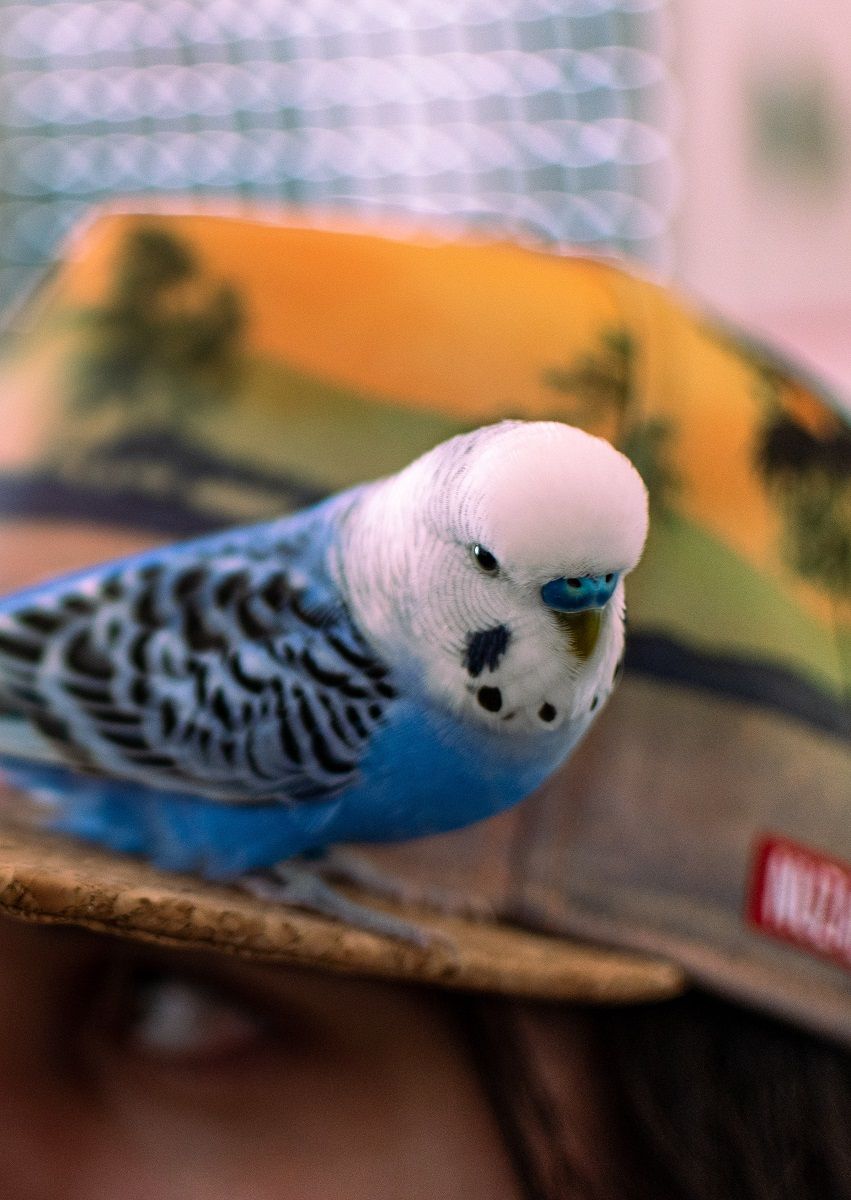
Aspiring first-time parrot keepers sometimes scoff when I recommend the humble budgerigar as an excellent choice. I get it: it’s such a standard bird, they’re so small, it’s not a “real” parrot like an African grey or Amazon.
Having kept budgies for years now, though, all I can say is: don’t underestimate these little pocket rockets! They can be everything you want in a parrot. Sure, they’re small, but they’re super smart, amazing at mimicking speech and sounds, and can form close bonds with their owners.
Folks often think of the sad budgie stuck in a small cage and figure that’s not for them. But a well-socialized parakeet that’s allowed to fly around and hang out with you is a joy. You’ll never be bored with budgies in the house, and the great thing is that they don’t come with many of the challenges of larger parrots.
5 ways I’d describe budgies:
- Independent (if you have multiple)
- Relatively quiet (for a parrot)
- Not too expensive to maintain
- Not prone to being bitey or aggressive
- Very smart

Budgie Care | Housing, Diet, Temperament & More
Thinking of adding a budgie to your family? Good choice! There’s a reason these little parakeets are the most popular pet parrots out there. Sadly, their popularity has also made …
Read moreCockatiel (Nymphicus hollandicus)
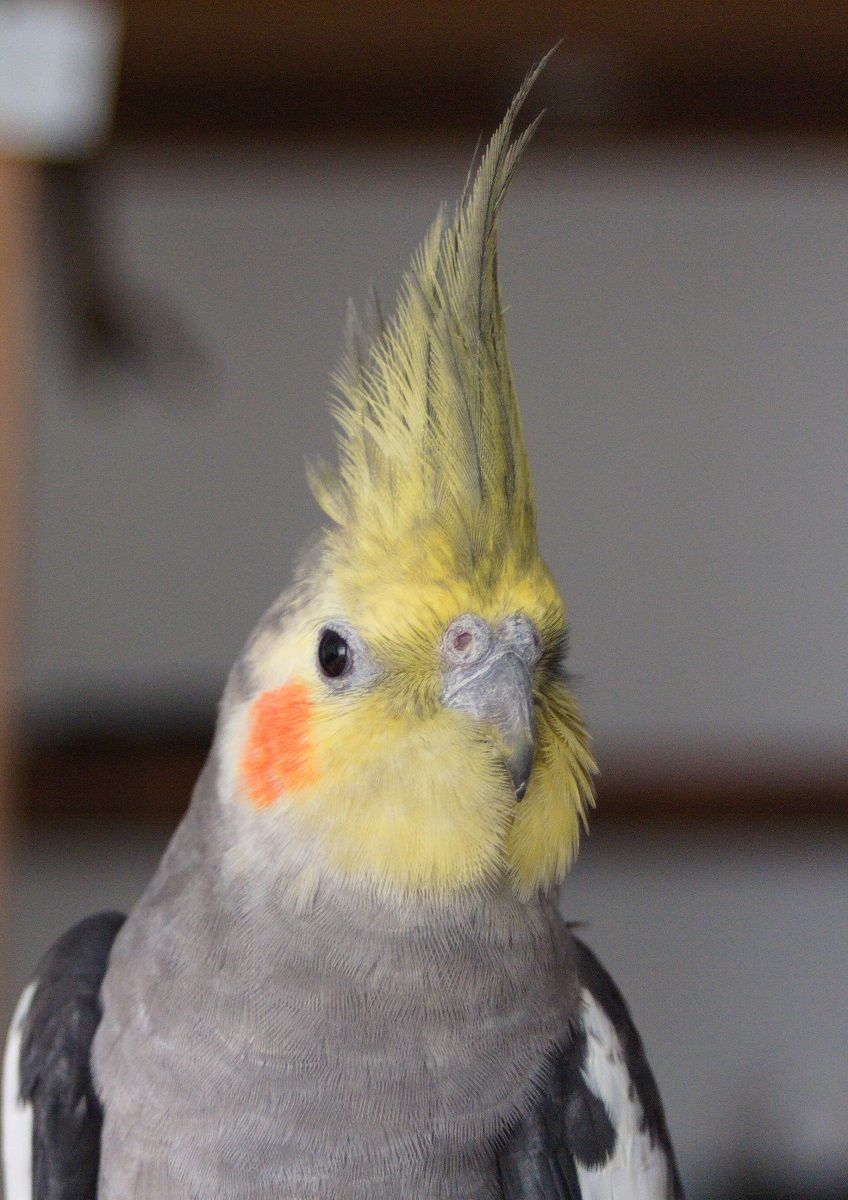
Cockatiels are the second most popular parrot species to be kept as pets, behind budgies. Not surprising, because although they’re a good bit larger, they’re still quite manageable. And they’re a joy!
I’ve kept cockatiels for years now and they’re just wonderful. They’re so expressive with their crests, form strong bonds with their owners, aren’t too loud (although they can certainly make noise), learn to mimic sounds, and can be taught a variety of tricks. Also, many love receiving head scratches.
The nice thing about cockatiels is that they’re a lot calmer than budgies. In fact, they’re generally considered to be among the chillest parrots around! Although they’re still curious and playful, they don’t tend to be “all over the place” like other psittacines.
5 ways I’d describe cockatiels:
- Not too loud
- Easy to figure out what they want and need
- Content to sit around and watch
- Can seem a bit dim, but actually smart
- Easy to tame
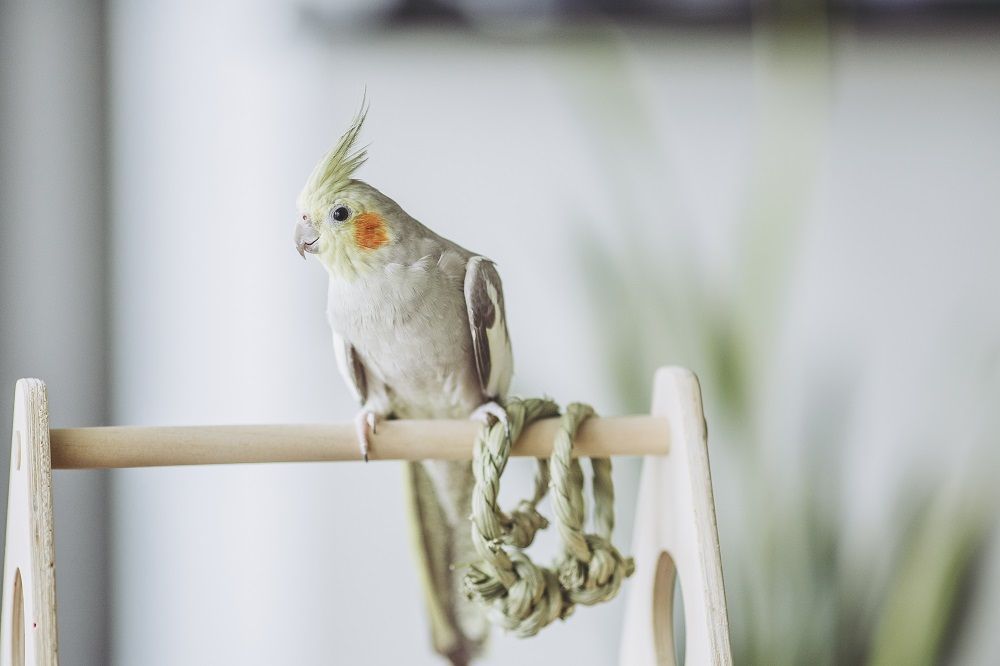
Caring For A Cockatiel | Your Favorite Crested Companion
If you’re new to the world of domestic parrots and interested in adding a cockatiel to your family, there’s a good chance you end up feeling overwhelmed. There’s a great …
Read moreKakariki (Cyanoramphus sp.)

For some reason, most folks talking about beginner parrots seem to forget about the kakariki. About the same size as a cockatiel, they lack the crest but make up for it with their beautiful coloration.
There are a few different species of kakariki (correct spelling kākāriki, which means “little parrot” in the native Māori language of New Zealand), but the one most commonly kept as a pet is called Cyanoramphus novaezelandiae: the red-fronted parakeet.
Kakariki owners generally consider their birds to be the perfect balance of fun and cuddly. They’re clownish and curious, but also unwaveringly friendly and love to hang out. Like many of the other species discussed here, they’re also on my list of quietest pet parrots.
5 ways I’d describe kakarikis:
- Fun and entertaining
- Friendly, outgoing personality
- Quiet bird that is apartment-proof
- Easy to tame
- Smart and can learn to imitate sounds
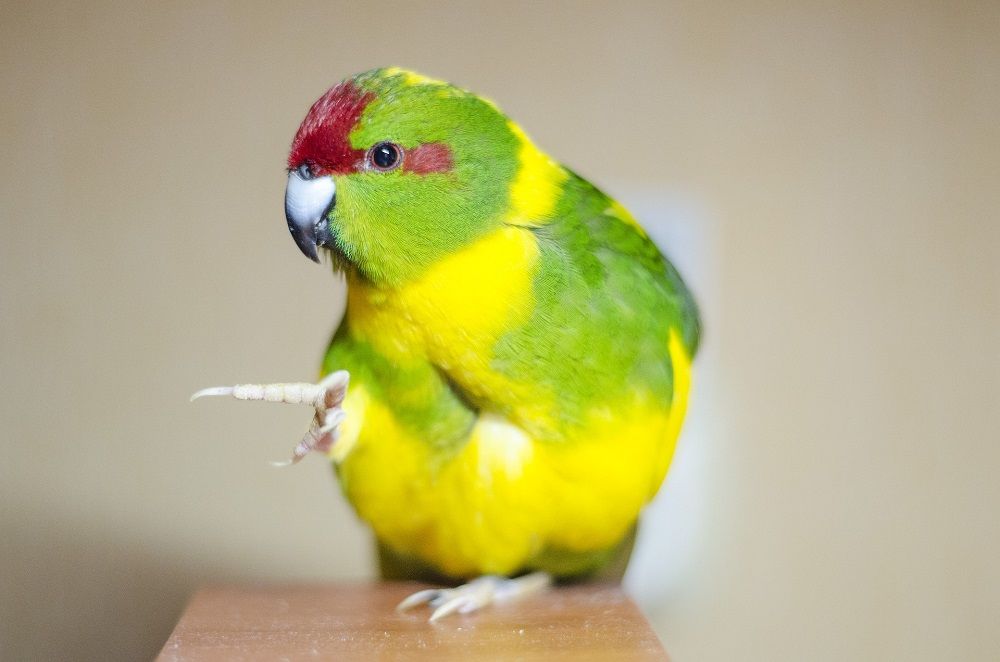
Kakariki Care, Diet, Housing & More | A Cheerful Pet Parakeet
Thinking of adding a kakariki parakeet to your feathered family? Good choice! These delightful New Zealand natives can make fantastic, loving pets. But what does a kakariki need to thrive? …
Read moreLovebird (Agapornis sp.)
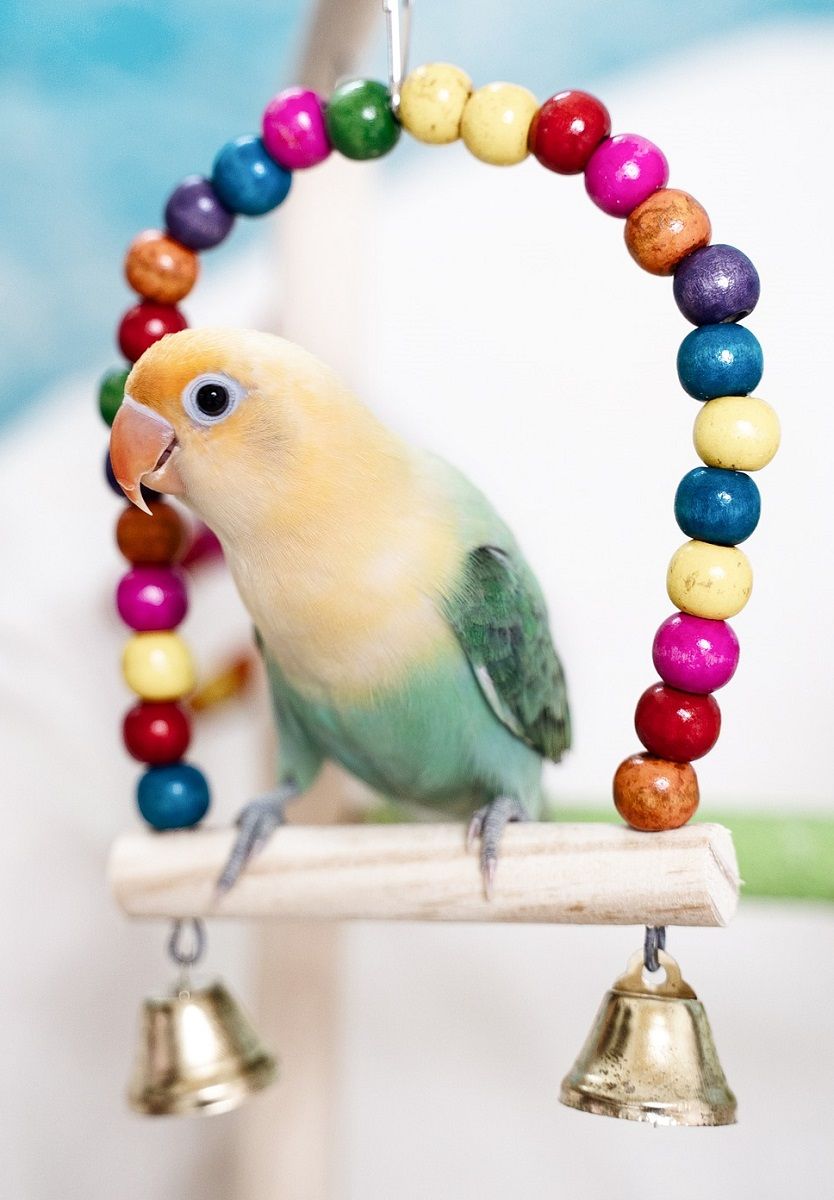
As with kakarikis, the term “lovebird” doesn’t apply to a single parrot species. It’s used for all birds in the genus Agapornis, which has nine species in total. Three of them are commonly kept as pets.
One of the feistier parrot species on this list of best parrots for beginners, lovebirds can also be very cuddly and form strong bonds with their owners. They’re surprisingly bold for their size, always in the mood to play, and usually pretty assertive about their needs.
You’ll never be bored if you’ve got a lovie flying around your home. You’ll also never be alone: they just love to hang out and get involved in everything their owner is doing!
5 ways I’d describe lovebirds:
- Playful and curious, with a bold attitude
- Need assertive socialization to prevent nippiness
- Love a good cuddle and hanging out
- High-pitched call, but relatively quiet
- Highly intelligent
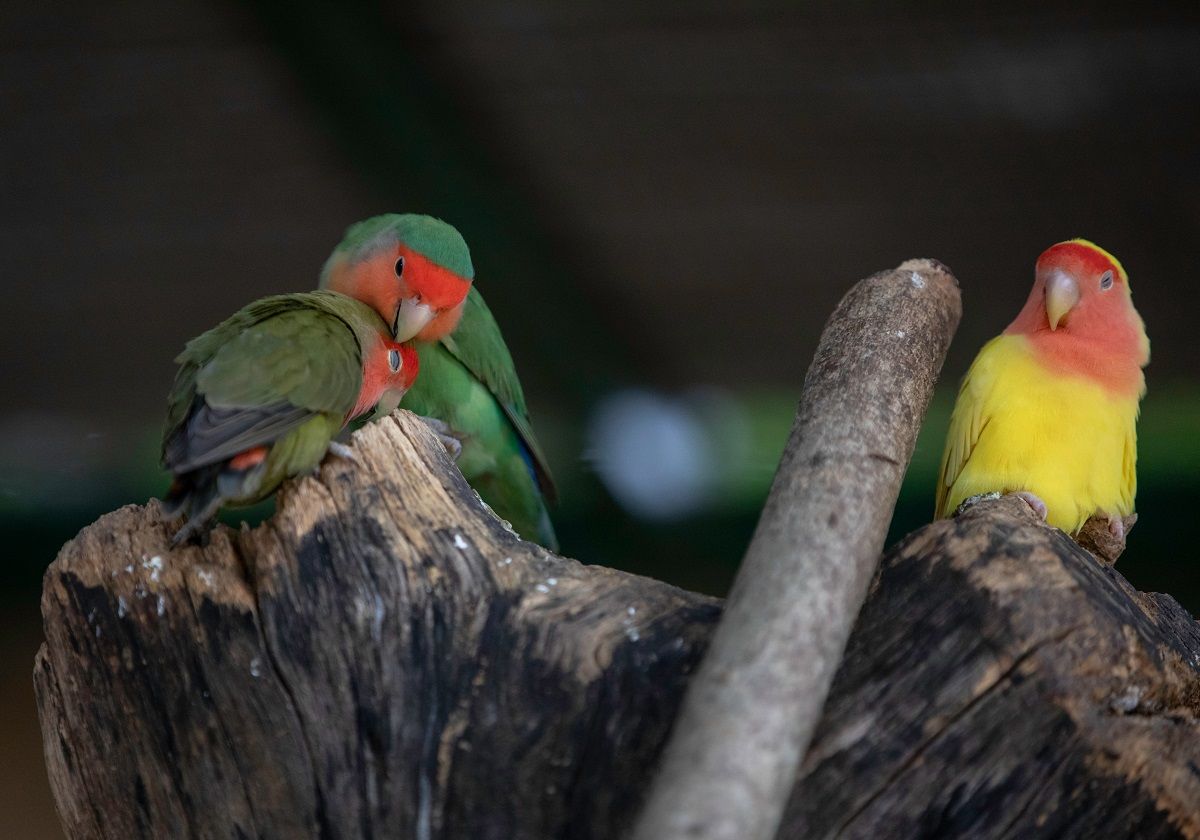
Types of Lovebirds | 9 Agapornis Species With Chart!
Thinking of getting a lovebird? Good choice! These small and colorful parrots can make fantastic pets. All types of lovebirds belong to the genus Agapornis, which contains a total of …
Read moreBourke’s Parakeet (Neopsephotus bourkii)
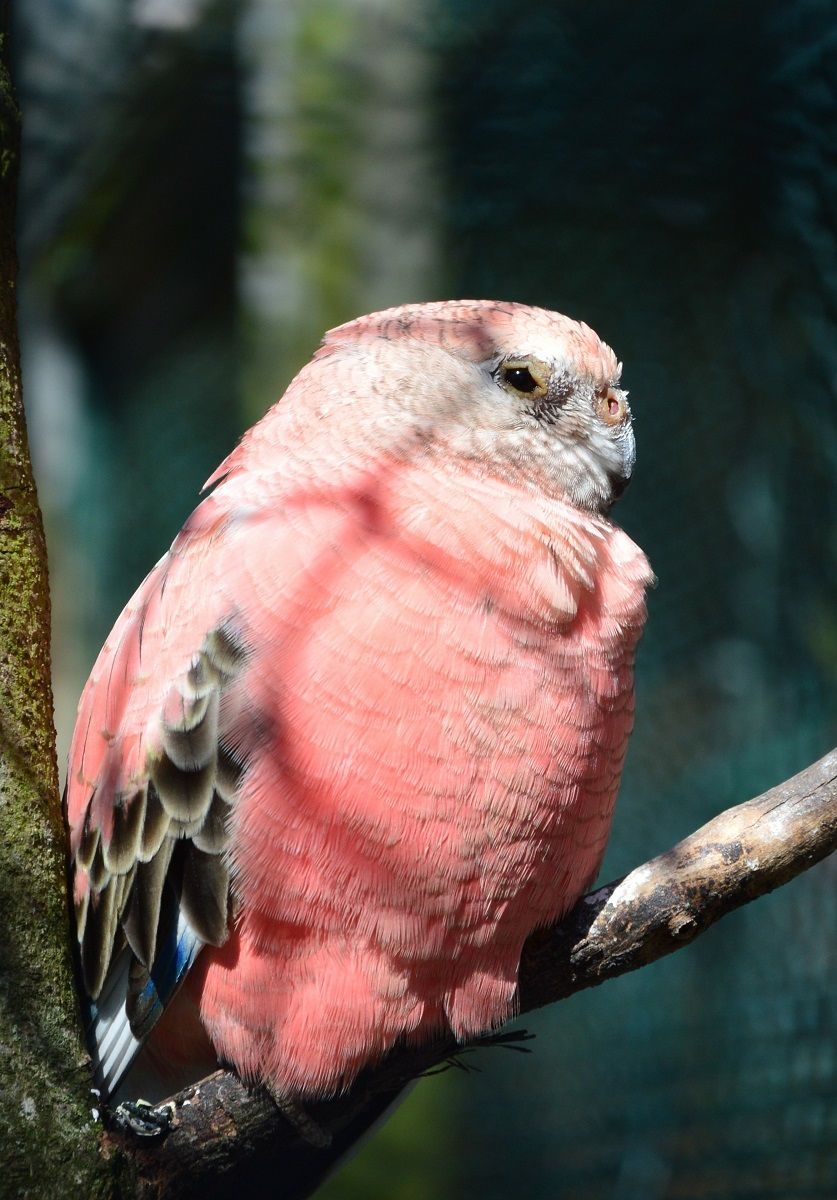
If a lovebird is a bit too much for you and you think a cockatiel is too “standard”, maybe a Bourke’s parakeet is the right choice. Like cockatiels, they’re known to be among the most mellow parrots out there.
Although Bourke’s parakeets are usually described as docile, this doesn’t mean you can’t have fun with one. They’re still parrots, and parrots by definition are intelligent, curious, and playful. It’s just that these parakeets like to mix up playtime with plenty of time spent hanging out and cuddling!
Although most of the parrots discussed here are relatively quiet, Bourke’s parakeets are particularly suitable for apartment living. They can make some noise around sunrise and sunset, but during the rest of the day, the most you’ll usually hear are some pleasant peeps and cheeps.
5 ways I’d describe Bourke’s parakeets:
- Fun but dignified
- Look at those colors, both in the wild-type and “rosy” Bourke’s!
- Friendly and like to hang out
- Not known to be aggressive or nippy
- Smart and trainable
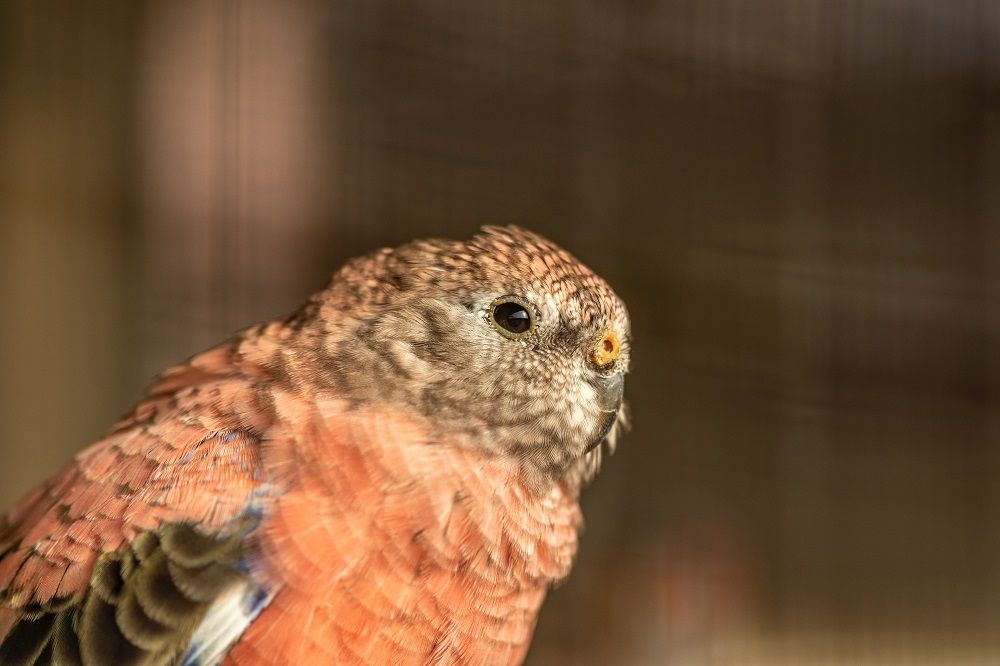
Bourke’s Parakeet Care & Info | A Colorful, Timid Beauty
Thinking of adopting a Bourke’s parakeet? Good choice! These small pink parrots are a joy to have in the house with their calm personalities and soft, cheerful chirps. Despite their …
Read moreRosella (Platycercus sp.)
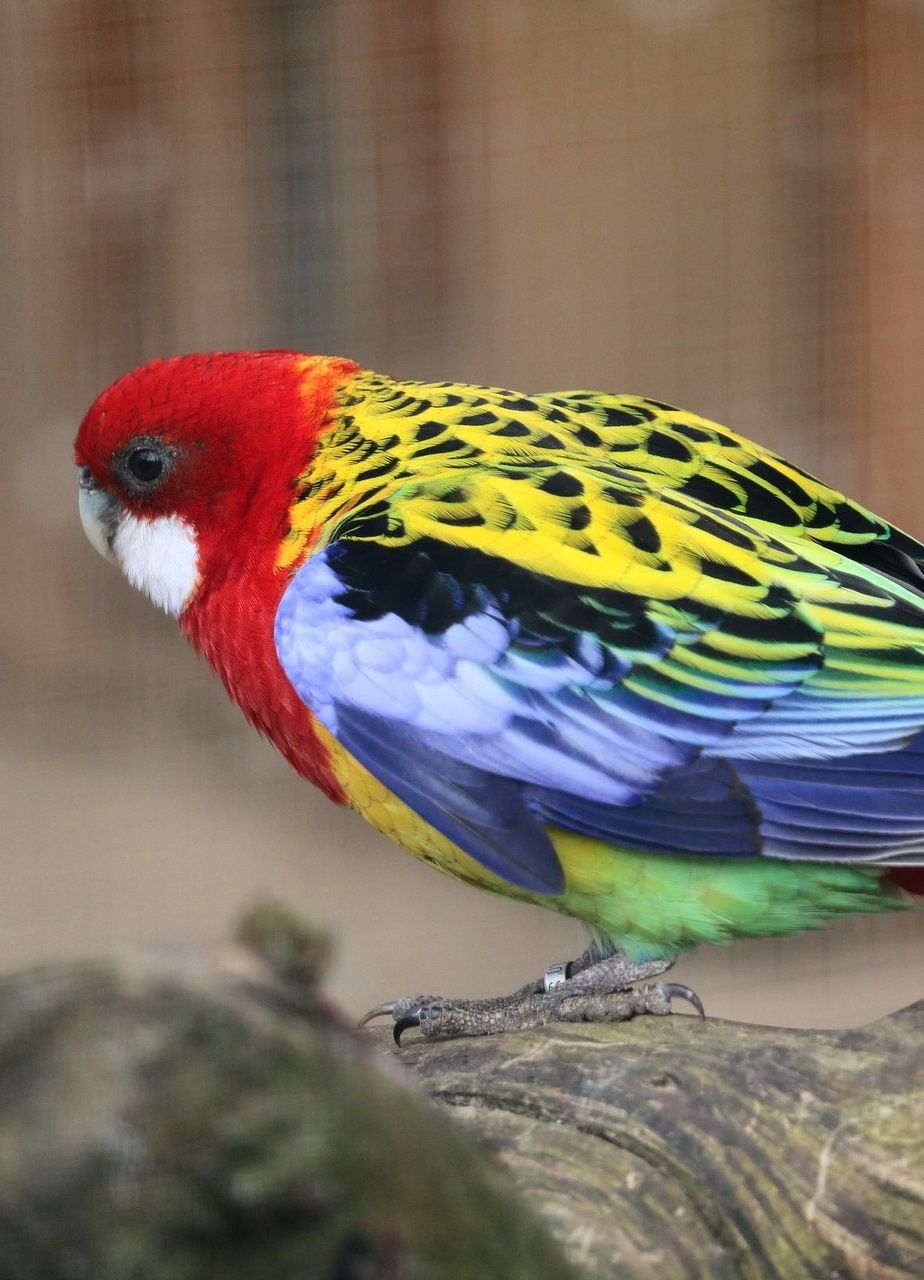
Can you believe those colors? The parrot pictured above is an eastern rosella (Platycercus eximius), but this genus contains many more dazzlingly colorful birds. And that’s not all: rosellas aren’t just beautiful to look at, but also make great pets.
Although rosellas aren’t all that popular as indoor parrots, with most bird enthusiasts keeping theirs in outdoor aviaries, they’re actually totally suitable as house pets.
Rosellas are suitable parrots for someone looking for a bird that’s not overly cuddly or inclined to be stuck to its owner all day, but that’s also still friendly, sociable, energetic and smart. As an added bonus, the genus Platycercus as a whole isn’t known to be loud. Their chirps are actually quite nice to listen to.
5 ways I’d describe rosellas:
- Social but not overly clingy
- Quiet enough, with melodious calls
- Curious, high-energy and intelligent
- Can be a little moody during breeding season
- Easy to tame and trainable
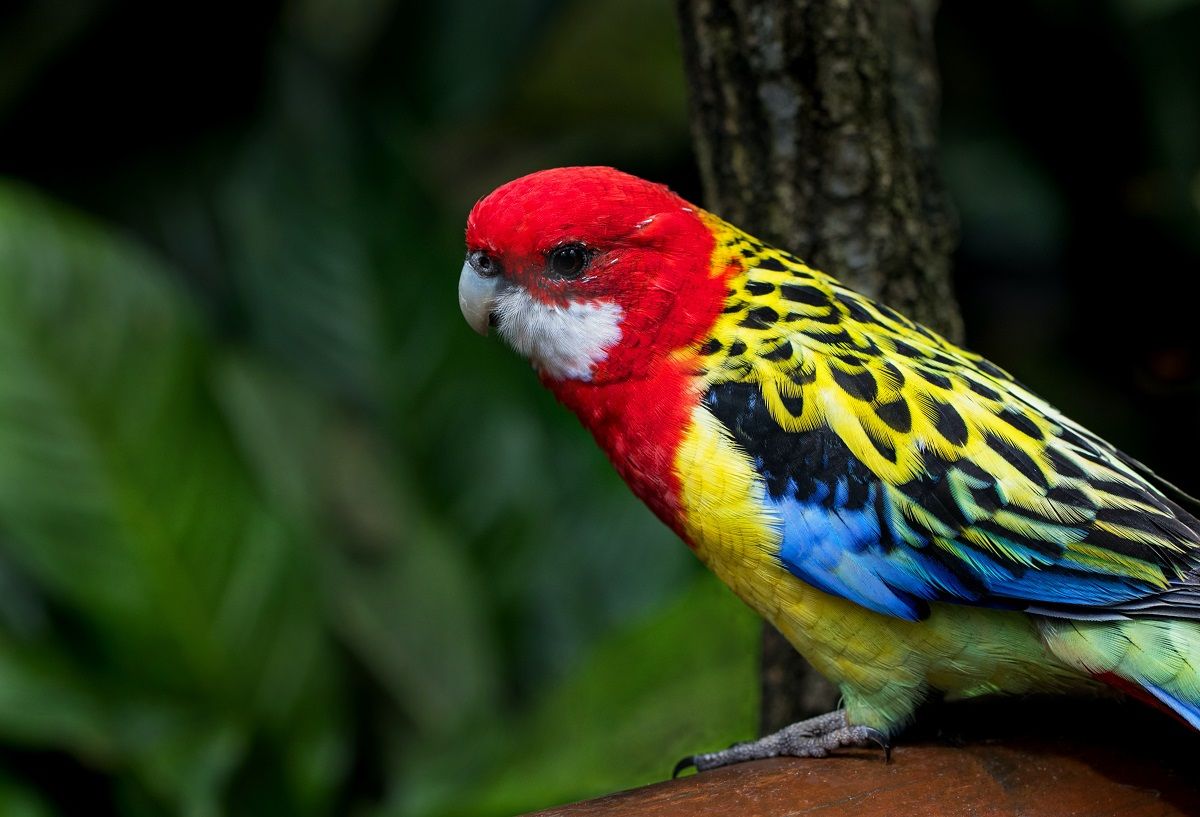
Eastern Rosella Care & Info | Platycercus eximius
Parrots in general are known for being extremely colorful birds, but this one takes the cake! The eastern rosella (Platycercus eximius) from Australia is not a large bird, but it …
Read moreLineolated parakeet (Bolborhynchus sp.)
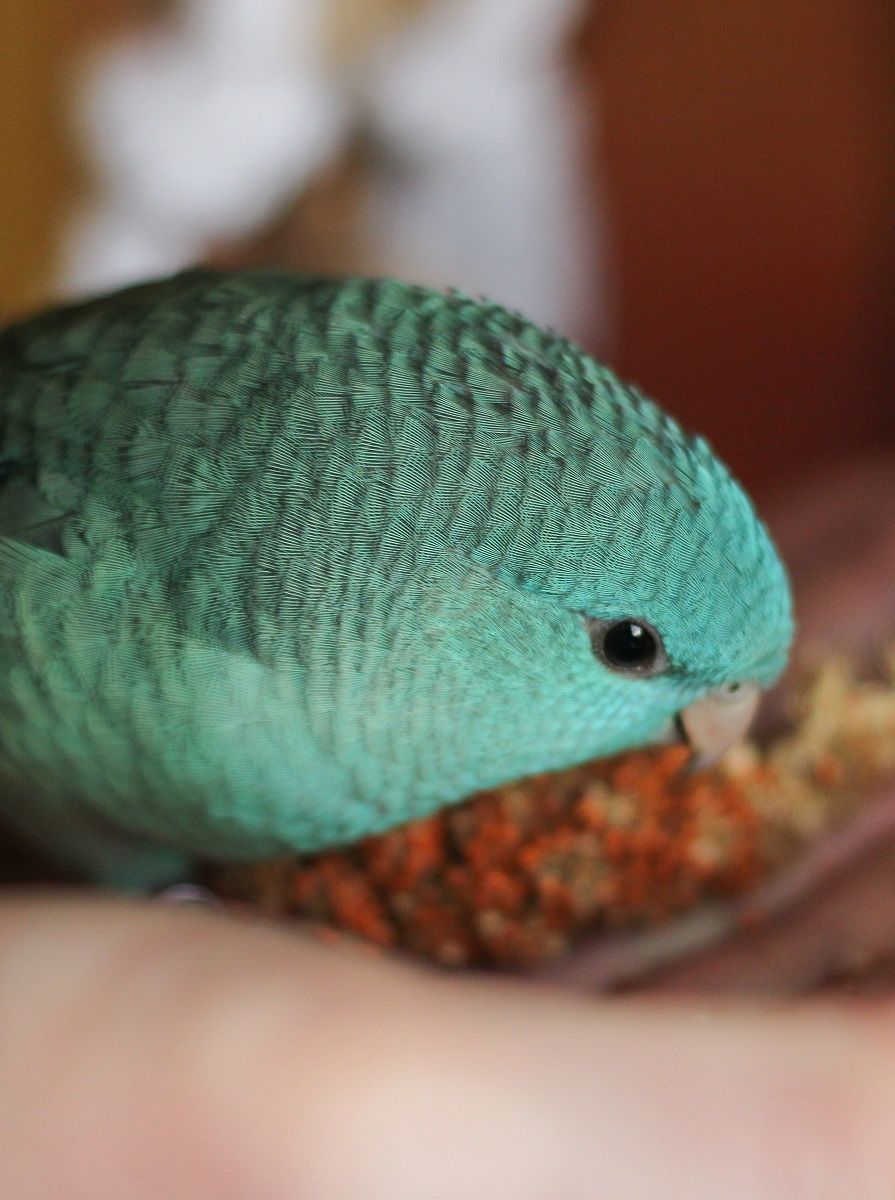
In my personal opinion, this is by far the most adorable parrot on the list. Lineolated parakeets of the genus Bolborhynchus are naturally found in highland forests in Latin America, and they’re tiny—around the same size as a budgie.
Known affectionately as linnies (and also as barred parakeets or Catherine parakeets), these little parrots make a great choice if you don’t want an overly boisterous bird. Although they’re still curious and playful, they’re also known for being even-tempered, friendly, and even docile.
Despite their size, linnies make great feathered friends. They can form a tight bond with their owner and tend to love hanging out or playing together. You can train yours to do all sorts of tricks and even mimic sounds and words.
5 ways I’d describe lineolated parakeets:
- Not known for being destructive
- Quiet, apartment-proof birds
- Available in a bunch of colors
- Sweet temperament, relatively calm
- Particular love for bathing
Senegal parrot (Poicephalus senegalus)

You may have noticed that our list of the best parrots for beginners only includes small to very small, mostly parakeets. There’s a reason for that: smaller parrots are generally quieter and less destructive. For folks who want more of a “real” parrot, though, maybe a Senegal is a good choice.
Senegal parrots are usually considered suitable for beginners. Although they can look a bit spooky with their black heads and yellow eyes, they’re generally sociable, reasonably calm, and not crazy loud. They love to play and can be real clowns.
And by the way—although the Senegal parrot is the most popular in its genus, Poicephalus, there are a bunch of other species to choose from. The Meyer’s parrot, P. meyeri, is another one you may come across in your local pet store.
5 ways I’d describe Senegal parrots:
- Goofy and playful, but not too hyper
- Reasonably quiet, not great talkers
- Can be shy, but also quite cuddly
- Highly intelligent
- Easy to tame and train
Red-rumped parrot (Psephotus haematonotus)
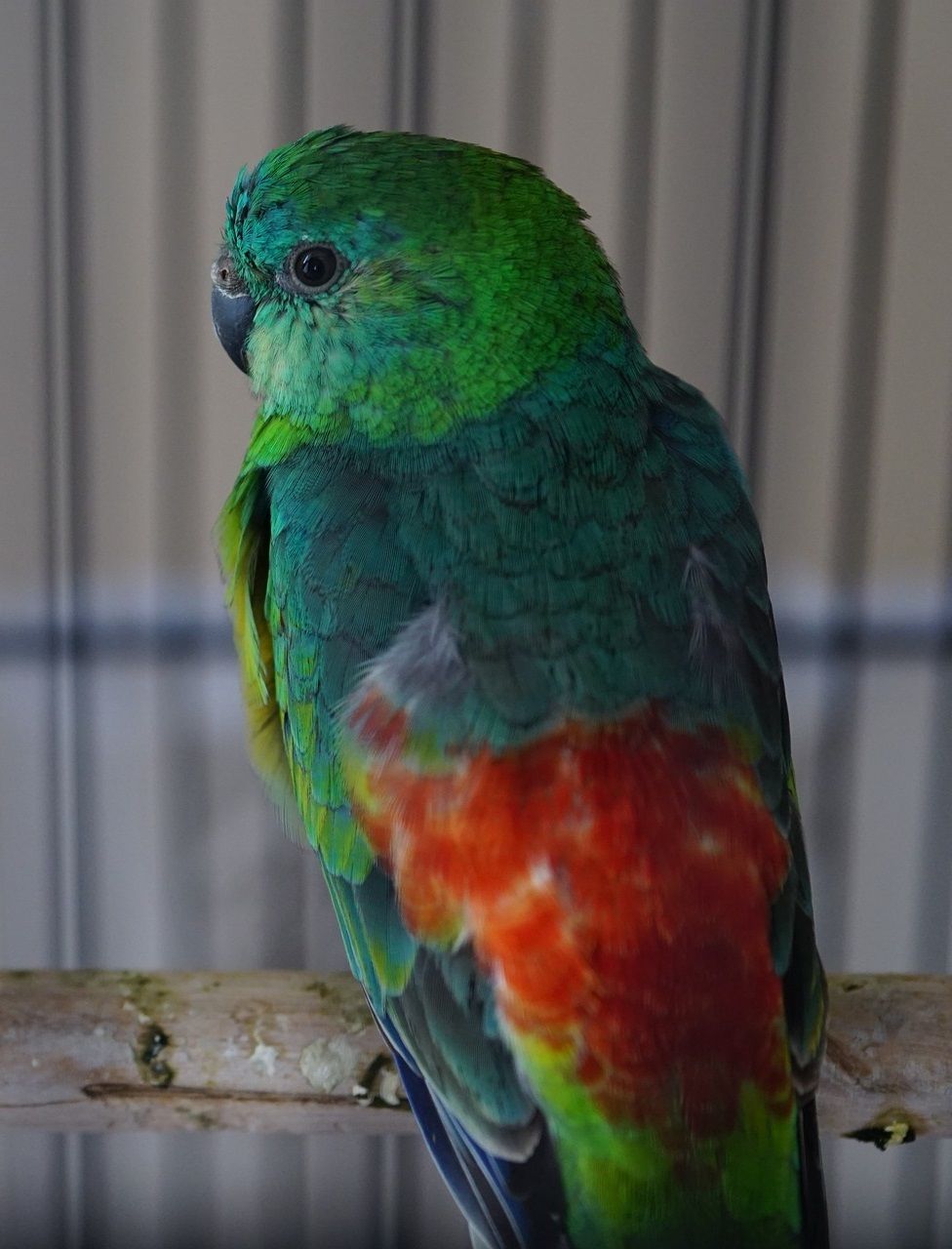
A lesser-known small parrot to consider as your first bird is Psephotus haematonotus: the red-rumped parrot. Like many of the species on the list, it’s naturally found in Australia, and the multicolored males are absolute stunners (although the unusual mossy brown of the females looks quite nice as well).
The red-rumped parrot is closely related to rosellas, and they share many characteristics with their cousins. They’re known for being friendly, curious and playful, but they’re also considered to be among the more docile and quiet parrots.
Although red-rumps are often kept as aviary birds, they do well as house pets too. Give yours plenty of opportunity to fly around, as well as lots of attention. It will enjoy trick training, maybe head scratches, and most of all, to just hang out and doze on your shoulder while you watch a movie.
5 ways I’d describe red-rumped parrots:
- Friendly, social disposition
- Curious and playful
- Always on the go
- Quiet (for a parrot)
- Very trainable
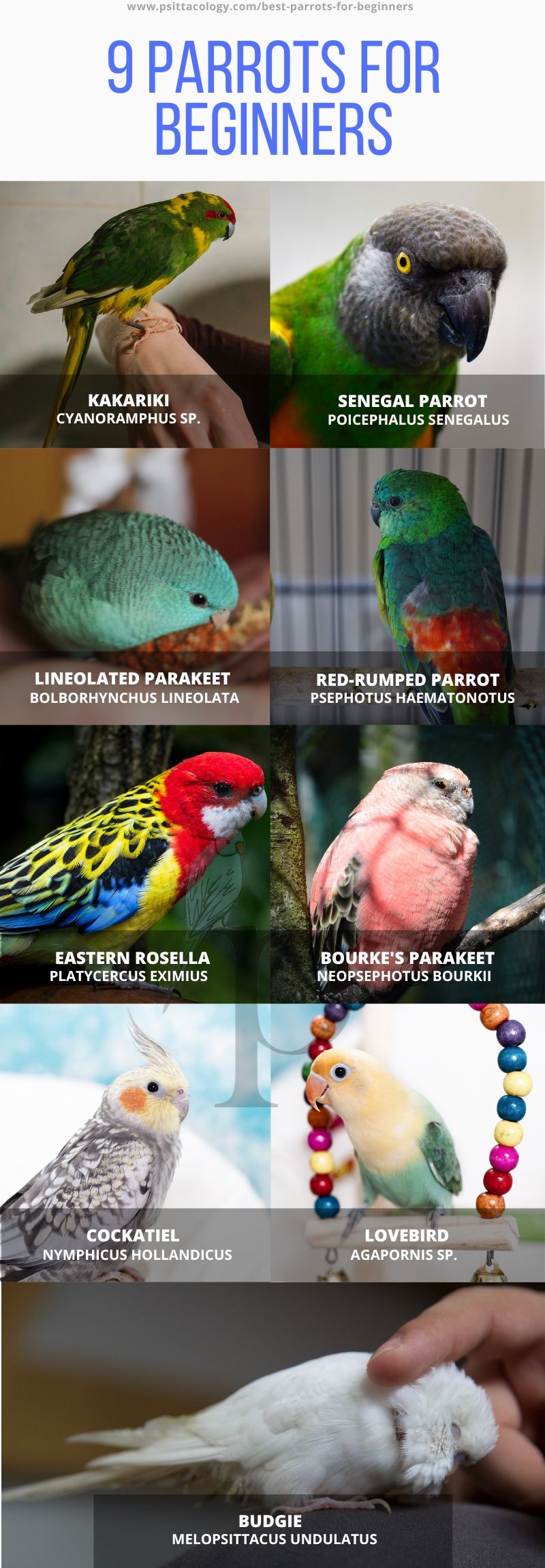
Other birds to consider
The birds described here are all relatively easy to keep as far as parrots go, but they still aren’t exactly the most straightforward animals to keep as pets. As mentioned, all parrots make noise, need a lot of attention, and can be sensitive or even bitey.
If this all sounds like a bit too much for you, why don’t you consider a non-psittacine bird? There’s more to the bird world than just parrots, including many I’d consider better for beginners.
Some common pet birds that may fit your family include:
- Diamond dove (Geopelia cuneata): quiet and gentle
- Pigeons: sociable, quiet, affectionate
- Zebra finch (Taeniopygia sp.): cheerful and active
- Canary (Serinus canaria): timid, beautiful singers
- Coturnix quail (Coturnix sp.): docile and tameable
Be sure to research the bird you’re interested in before getting one. Some are very social and love to cuddle, while others are more aloof. It all depends on what you’re looking for in your feathered pet!
My choice for a non-parrot pet would be a pigeon. I kept a pair of Old German Owl pigeons when I was younger and they work surprisingly well as house pets. They’re way quieter than any parrot, cheerful, very tameable and even cuddly.
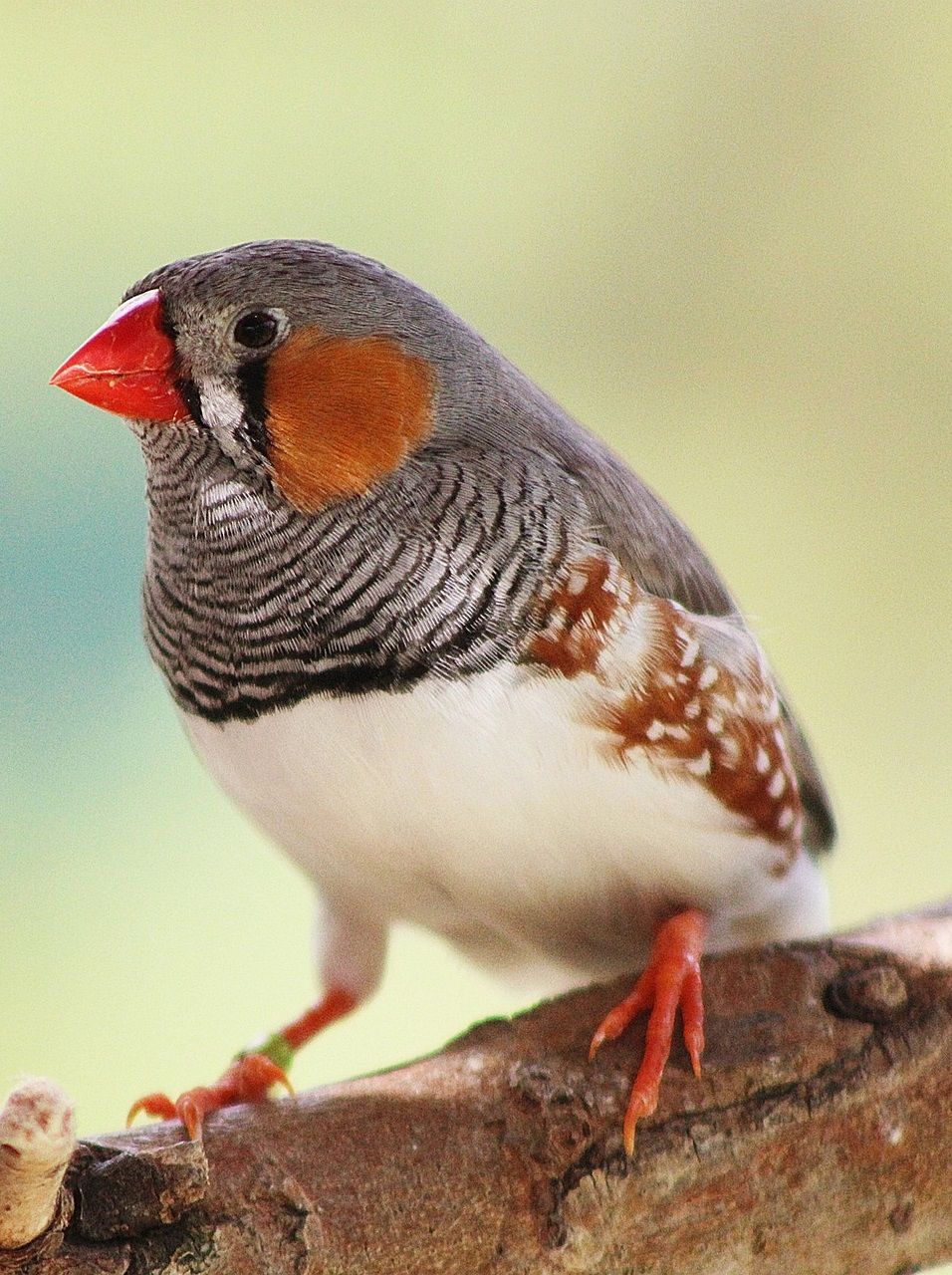
Any more questions about the best parrots for beginners? What species was your first parrot? Don’t hesitate to leave a comment below!
